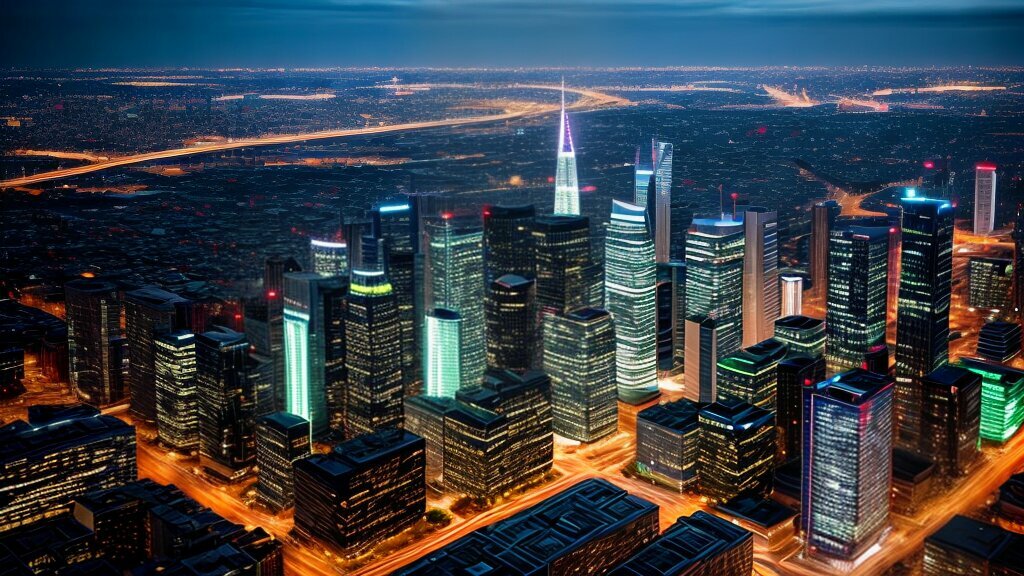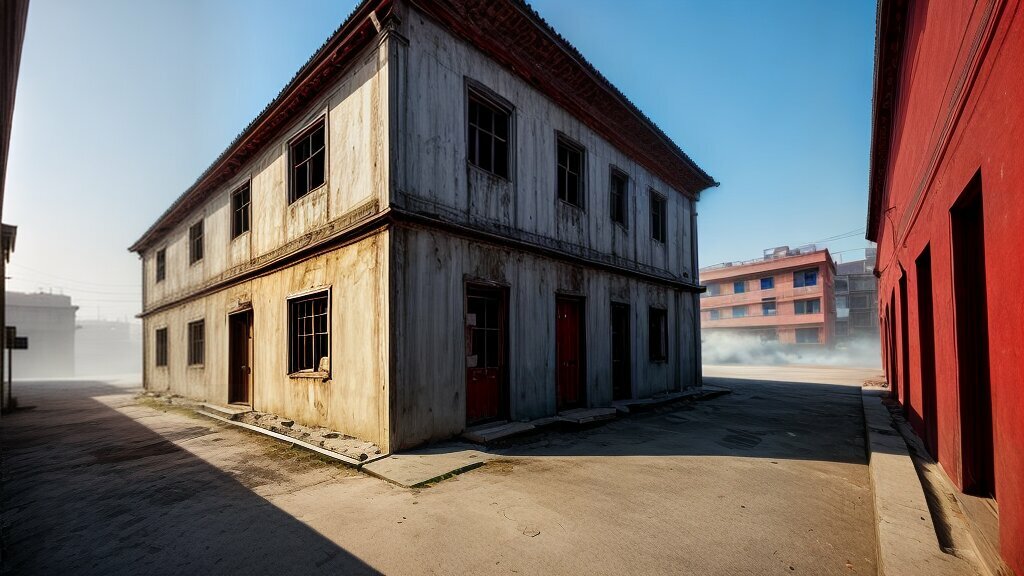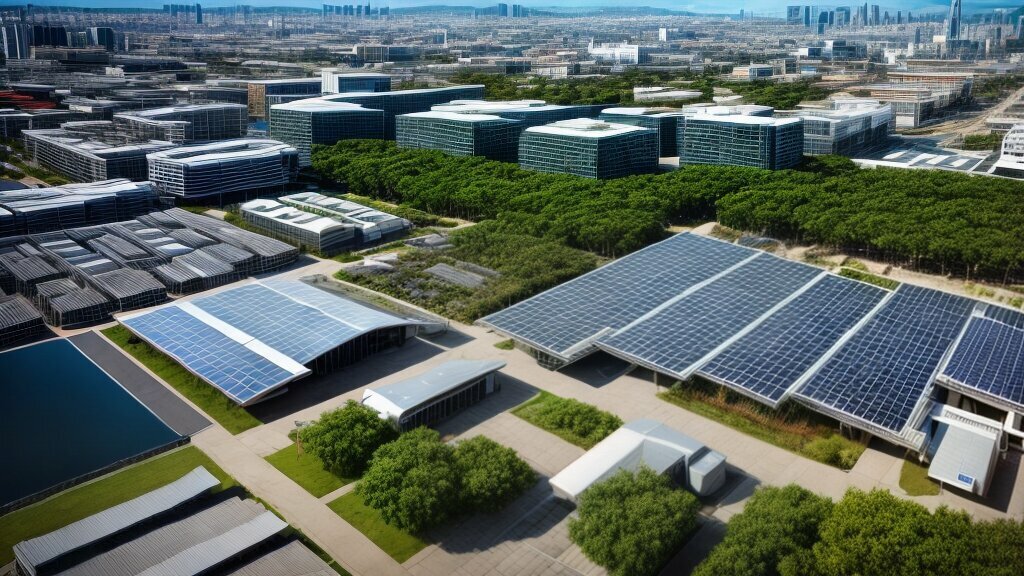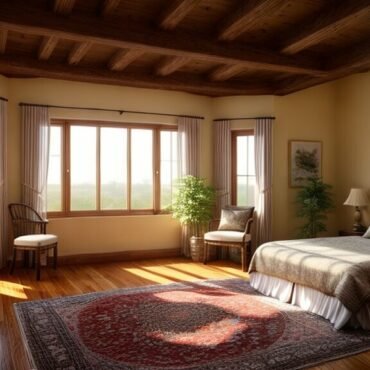Welcome to our article on the economic benefits of resilient architecture. In today’s world, where natural disasters and climate change are becoming increasingly prevalent, it is crucial to invest in sustainable, adaptive designs that can withstand environmental challenges. In this section, we will highlight the economic advantages of resilient architecture, including long-term savings and increased property value. Let’s dive in!
Key Takeaways:
- Economic benefits are a crucial aspect of resilient architecture.
- Investing in sustainable, adaptive designs can lead to long-term savings.
- Resilient architecture can also increase property value.
What is Resilient Architecture?
Resilient architecture is a design approach that focuses on creating buildings and structures that can withstand various environmental challenges. It involves integrating sustainable and adaptive features into the design of buildings, in order to ensure that they remain functional and resilient, even in the face of natural disasters, extreme weather events, and other environmental threats.
One of the key principles of resilient architecture is to create buildings and structures that are able to adapt to changing environments and conditions. This can involve using materials that are more durable and resistant to wear and tear, as well as implementing design strategies that take into account changing patterns of weather and climate.
Resilient architecture is an increasingly important area of focus for architects and designers, as the need for sustainable and resilient buildings becomes more pressing. By integrating resilient features into their designs, architects can create more durable and functional buildings, which can help to mitigate the risks of damage, loss, and disruption that can arise from environmental challenges.

The Economic Case for Resilient Architecture
Investing in sustainable, adaptive designs is not only good for the environment but can also lead to significant cost savings in the long run. Resilient architecture offers numerous economic benefits, making it a smart choice for property owners and businesses.
| Economic Benefit |
Description |
| Long-term savings |
Resilient architecture ensures that buildings and structures can withstand various environmental challenges. This results in lower repair and reconstruction costs in the long term, leading to significant savings for property owners. |
| Increased property value |
Buildings designed with resilient architecture are highly sought after, leading to increased demand and potential for higher resale or rental value. This can be particularly beneficial in competitive real estate markets. |
| Reduced maintenance costs |
Durable materials and innovative design features can minimise the need for repairs and replacements, resulting in long-term cost savings for property owners. |
These economic benefits are further enhanced by the potential for insurance premium reduction, offering property owners and businesses even more financial advantages.
Investing in resilient architecture not only makes economic sense but also contributes to sustainable development. By reducing the environmental impact of buildings and structures, resilient architecture promotes long-term sustainability, benefiting both the economy and the planet.

Disaster Resilience and Cost Reduction
Resilient architecture can play a critical role in mitigating the financial impact of natural disasters. By focusing on designing buildings that can withstand environmental stresses, costs associated with repairs and reconstruction can be significantly reduced.
For instance, in the aftermath of Hurricane Maria, a resilient school building in Puerto Rico was able to serve as a shelter for the local community. Not only did the building sustain minimal damage, but it was also able to provide a safe haven for those affected by the hurricane.
| Resilient Features |
Cost Savings Potential |
| High-performance windows and doors |
Less damage to interiors and contents |
| Roof coverings |
Reduced damage to roof structure and other internal systems |
| Flood-resistant materials |
Less damage to foundations, structures, and contents |
Insurers are also recognizing the importance of resilient architecture in reducing financial losses attributed to natural disasters. Some insurance companies offer premium reductions for resilient buildings, recognizing the long-term savings and reduced risk associated with such designs.

By investing in resilient architecture, property owners can significantly reduce the financial impact of natural disasters and enhance the value of their properties over time.
Energy Efficiency and Financial Benefits
Resilient architecture is not only about creating structures that can withstand environmental challenges but also about ensuring sustainable practices that lead to long-term cost savings. Energy efficiency is a key aspect of resilient architecture that offers significant economic benefits to property owners and occupants.
By incorporating sustainable design strategies, resilient buildings can significantly reduce energy consumption and lower utility bills. This translates into substantial long-term savings that far outweigh the initial investment. The use of energy-efficient materials, such as insulation, and the incorporation of innovative technologies, such as smart HVAC systems, can drastically reduce energy usage without compromising on comfort or functionality.

Furthermore, energy-efficient buildings are highly sought after by tenants and buyers, leading to increased demand and potentially higher rental or resale value. A study by the National Institute of Building Sciences found that energy-efficient commercial properties had a 6.6% higher occupancy rate and a 16% higher resale value compared to non-energy-efficient properties.
Investing in energy-efficient resilient architecture, therefore, not only leads to reduced operating costs and increased property value but also demonstrates a commitment to sustainability and environmental responsibility.
Increased Property Value
Resilient architecture is not only about protecting buildings from environmental challenges but also about increasing their value. Buildings designed with sustainability and durability in mind are highly sought after in today’s market, attracting more potential buyers and tenants.
Resilient buildings have a higher resale value, making them a smart investment for property owners and developers. Moreover, they can generate higher rental income, which translates into more significant long-term profits. According to a report by the Urban Land Institute, “resilient buildings can command rents as much as 6% higher than traditional buildings, while at the same time having lower insurance premiums and operating costs.”

In addition to their financial benefits, resilient buildings can also elevate the status of a neighbourhood or community. Areas that boast resilient and sustainable architecture are more likely to attract new investments, revitalizing the local economy and creating job opportunities. Therefore, investing in resilient architecture not only benefits individual property owners but also contributes to the overall growth and development of a region.
The Role of Resilient Architecture in Reducing Maintenance Costs
One of the key economic benefits of resilient architecture is the potential for reduced maintenance costs. By incorporating durable materials and innovative design features, resilient buildings can minimise the need for repairs and replacements over time, resulting in long-term cost savings for property owners.
For example, a resilient building might incorporate weather-resistant roofing materials, such as metal or asphalt shingles, that can withstand high winds, hail, and heavy rain. Similarly, architects might design drainage systems that minimise water intrusion and prevent flooding, thereby reducing the risk of water damage and the need for costly repairs.
Resilient architecture can also reduce maintenance costs by incorporating features that improve the durability and longevity of building components. For instance, architects might utilise prefabricated building components, which can be produced more efficiently and with greater precision than traditional building materials. This approach can minimise the need for on-site labour and reduce the risk of human error, resulting in higher quality, more durable construction.
In addition to reducing maintenance costs, resilient architecture can also enhance the longevity of a building, resulting in long-term cost savings. By building structures that are designed to withstand environmental challenges, such as natural disasters and climate change, property owners can avoid the need for costly repairs and replacements that might otherwise be required in the event of damage or obsolescence.
Overall, resilient architecture offers a compelling economic case for property owners, particularly those seeking to minimise maintenance costs and maximise the longevity of their buildings. By investing in sustainable, adaptive designs, property owners can enhance the resilience of their buildings and minimise the risks of damage, obsolescence, and high maintenance costs over time.

Business Continuity and Productivity
Resilient architecture not only benefits the economy at a property level but can also have a positive impact on businesses and productivity. In the event of a natural disaster or other disruption, resilient designs can ensure business continuity, reducing financial losses and maintaining productivity levels.
Disruptions can have significant impacts on businesses, from damage to physical spaces to interruptions in the supply chain. However, by investing in resilient architecture, businesses can minimize these risks and ensure they are prepared for any potential challenges.
| Benefits of Resilient Architecture for Businesses |
Examples of Resilient Design Features |
| Minimized financial losses during disruptions |
Back-up power generators, reinforced building structures |
| Maintained productivity levels during disruptions |
Flexible use of space, adaptable technology systems |
Additionally, resilient architecture can enhance the resilience of the broader community, contributing to the sustainable development of cities and towns. By investing in resilient urban planning, businesses can attract investment and contribute to the overall quality of life in the community.

Investing in resilient architecture can ensure business continuity and maintained productivity levels during disruptions, minimizing financial losses. By contributing to the broader community’s resilience, businesses can attract investment and contribute to sustainable development.
Resilient Urban Planning and Community Benefits
Resilient architecture not only benefits individual property owners but also has positive economic impacts on the wider community. Resilient urban planning can lead to a more sustainable and adaptable built environment, enhancing the overall quality of life for residents.
In addition, resilient urban planning can attract investment and contribute to the sustainable development of cities and towns. By creating buildings and infrastructure that can withstand environmental challenges, cities can increase their resilience to climate change and natural disasters, making them more attractive to businesses and investors.
Furthermore, resilient urban planning can enhance social cohesion and community resilience. By ensuring that essential services such as healthcare facilities, schools, and emergency services remain operational during disasters, resilient architecture can help maintain community continuity and minimize the impact of disruptions on vulnerable populations.
By investing in resilient urban planning, communities can build a better future that is both economically and socially sustainable.

The Role of Green Building in Resilient Architecture
Incorporating green building practices into resilient architecture designs can offer additional economic benefits alongside reducing environmental impact. Sustainability is at the core of resilient architecture, and green building fits this ethos.
Green building strategies such as energy efficiency and sustainable materials can result in cost savings for property owners. Energy-efficient buildings reduce energy consumption, lowering utility bills and operating costs. Additionally, designing with sustainable materials can reduce material costs while providing energy efficiency, durability, and a reduced environmental impact.
Moreover, green buildings generally have higher resale or rental value due to their sustainable features and the growing demand from tenants and buyers. According to a study by the US Green Building Council, green buildings can have increased property values by up to 4%.
Green building practices can also contribute to improved indoor air quality, occupant health, and wellbeing. Healthy, comfortable buildings can have a positive impact on employee productivity, reducing employee absenteeism and increasing job satisfaction.
When it comes to sustainable development, green building practices complement resilient urban planning concepts. The integration of green spaces within urban areas not only provides ecological benefits, such as biodiversity and reducing urban heat islands, but also improves the aesthetics and liveability for communities. This leads to increased economic benefits, such as increased tourism and higher property values.

In summary, incorporating green building practices into resilient architecture designs can provide additional economic benefits, alongside reducing environmental impact. It can lead to cost savings, and improved indoor air quality and occupant health and wellbeing. This, in turn, results in higher property values and increased tourism, contributing to sustainable economic growth at a community level.
Conclusion
Investing in resilient architecture isn’t just a smart choice for the environment – it’s also a smart choice for your wallet. Resilient architecture offers a wide range of economic benefits, including long-term savings, increased property value, and reduced maintenance costs.
By focusing on sustainable, adaptive designs, you can create buildings and structures that can withstand various environmental challenges, from natural disasters to climate change. This not only leads to reduced damage and repair costs, but also lower utility bills thanks to energy-efficient design strategies.
Moreover, resilient architecture ensures businesses can maintain productivity levels even during disruptions, while also contributing to the sustainable development of cities and towns. At a community level, resilient urban planning enhances the overall quality of life and attracts investments.
To achieve all these economic benefits while reducing environmental impact, incorporating green building practices into resilient architecture is key. By doing so, you can achieve even more long-term cost savings and contribute to a more sustainable future.
Choose Resilient Architecture for Long-Term Cost Savings and Sustainable Development
Investing in resilient architecture isn’t just a trend – it’s a necessity for our future. By opting for sustainable, adaptive designs, we can reduce our carbon footprint, contribute to the community, and save money in the long run. So if you’re looking to build or renovate a property, consider resilient architecture – your wallet (and the planet) will thank you!
FAQ
Q: What are the economic benefits of resilient architecture?
A: Resilient architecture offers long-term savings and increased property value.
Q: What is resilient architecture?
A: Resilient architecture focuses on creating buildings and structures that can withstand various environmental challenges, including natural disasters and climate change.
Q: What is the economic case for resilient architecture?
A: Investing in resilient architecture can lead to significant cost savings in the long run, as well as positive impacts on property value and reduced maintenance costs.
Q: How does resilient architecture reduce disaster-related costs?
A: Resilient designs can minimize damage, resulting in lower repair and reconstruction costs. Additionally, insurance premiums can be reduced.
Q: What are the financial benefits of energy-efficient resilient architecture?
A: Sustainable design strategies can lead to reduced energy consumption and lower utility bills, resulting in long-term financial savings.
Q: How does resilient architecture impact property value?
A: Resilient buildings are highly sought after, leading to increased demand and the potential for higher resale or rental value.
Q: Does resilient architecture reduce maintenance costs?
A: Yes, durable materials and innovative design features can minimize the need for repairs and replacements, resulting in long-term cost savings for property owners.
Q: How does resilient architecture benefit businesses?
A: Resilient designs ensure business continuity during disruptions, minimizing financial losses and maintaining productivity levels.
Q: What are the community benefits of resilient architecture?
A: Resilient urban planning enhances the overall quality of life, attracts investments, and contributes to the sustainable development of cities and towns.
Q: What is the role of green building in resilient architecture?
A: Green building practices can be incorporated into resilient buildings, resulting in additional economic benefits and reduced environmental impact.



























Post comments (0)